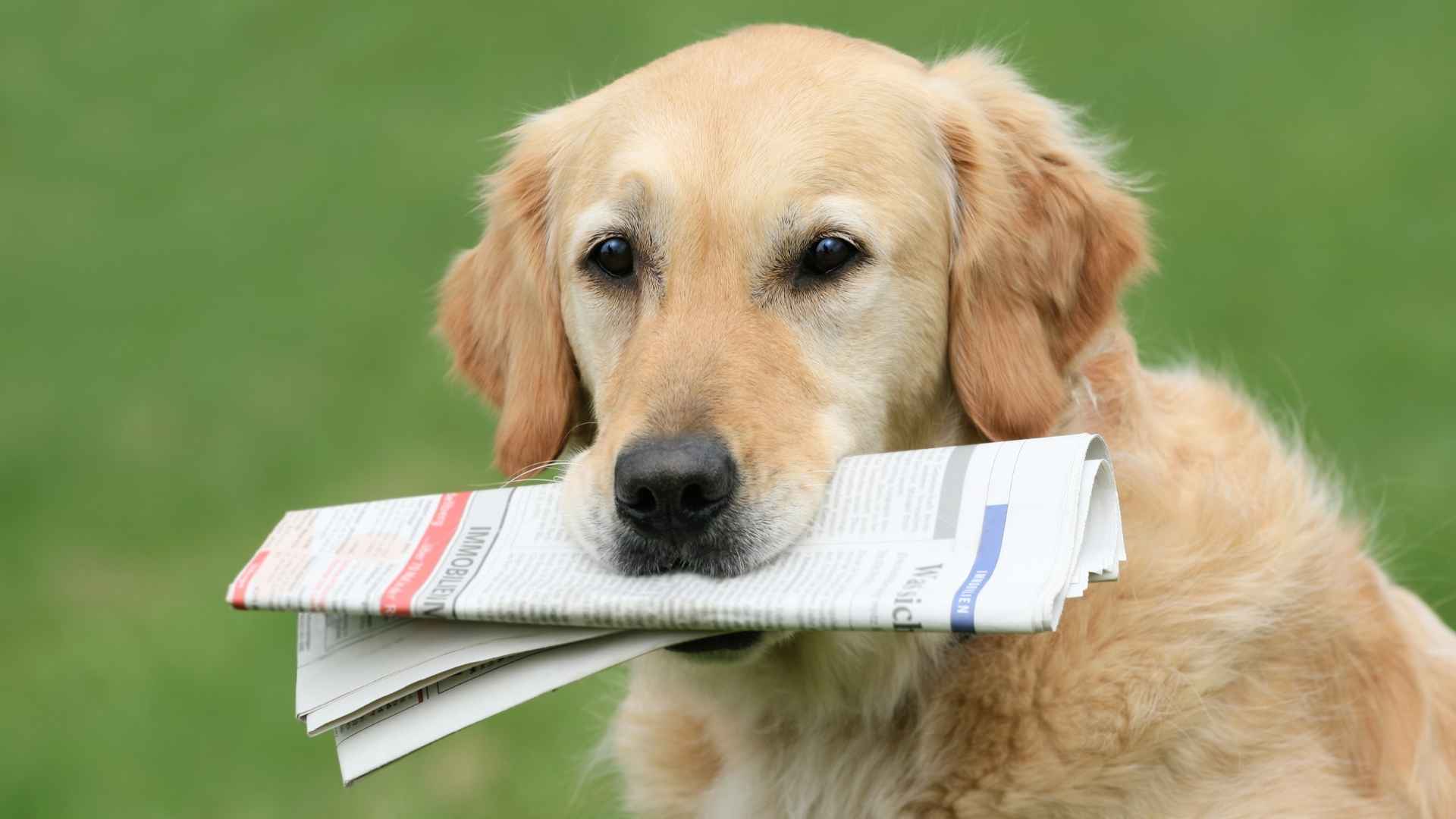Some dog breeds carry items such as newspapers instinctively, often without any formal training. Their behavior stems directly from centuries of breeding for retrieving and working instincts. These dogs demonstrate a natural drive to pick up and deliver objects, and they frequently generalize this skill to household items.
Their genetic heritage equips them with soft mouths, high intelligence, and a strong desire to please, which combine into hands‑off—or paws‑off—fetching abilities. In many homes, these breeds will spontaneously retrieve newspapers or mail simply because they understand the purpose and enjoy the task.
This article explores seven breeds particularly known for this talent, describing why they excel, their signature traits, and what makes them naturally inclined to bring the paper each morning.
Dog Breeds That Bring Newspapers Without Training
1. Labrador Retriever
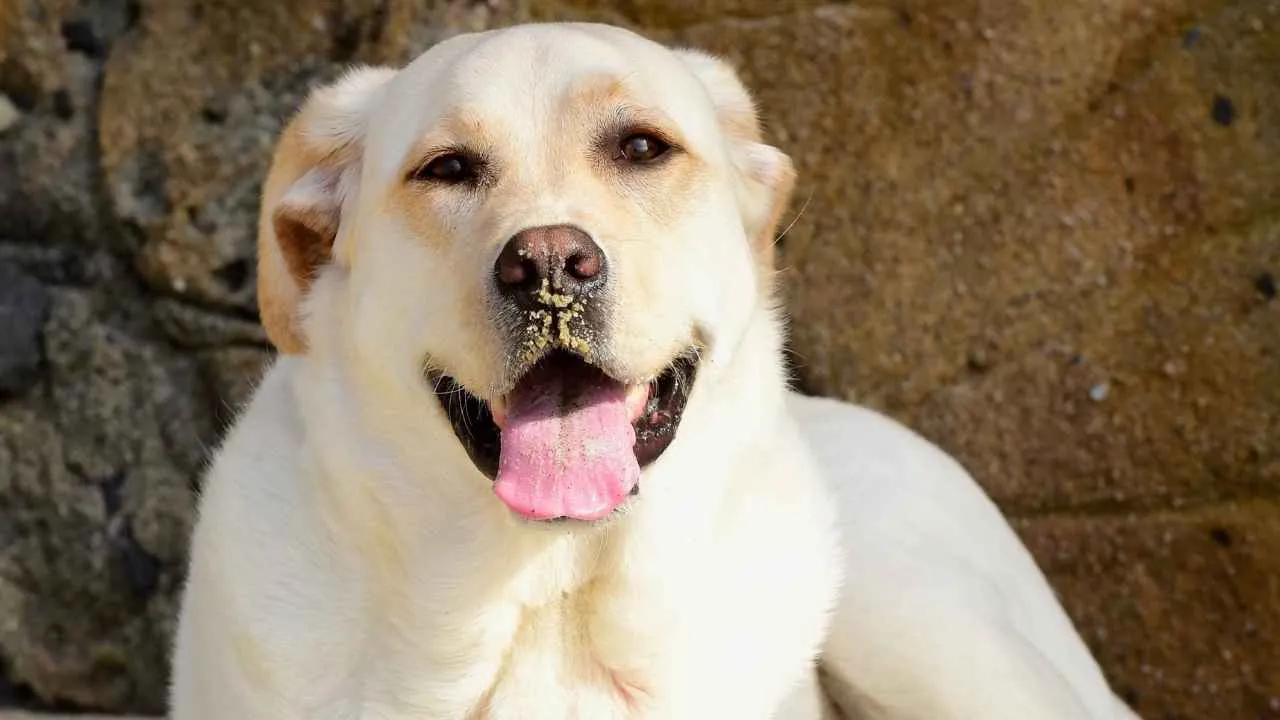
According to the AKC, the Labrador Retriever is one of the most popular and versatile dogs in the world, developed for purposeful work and companionship. Its origins trace to the coast of Newfoundland, where early dogs retrieved fishing nets and escaped fish for local fishermen before English breeders refined them into skilled waterfowl retrievers.
Their sturdy build, water-resistant coat, and “soft mouth” made them ideal for carrying game, and that instinct to gently pick up and deliver items is still ingrained in the breed today.
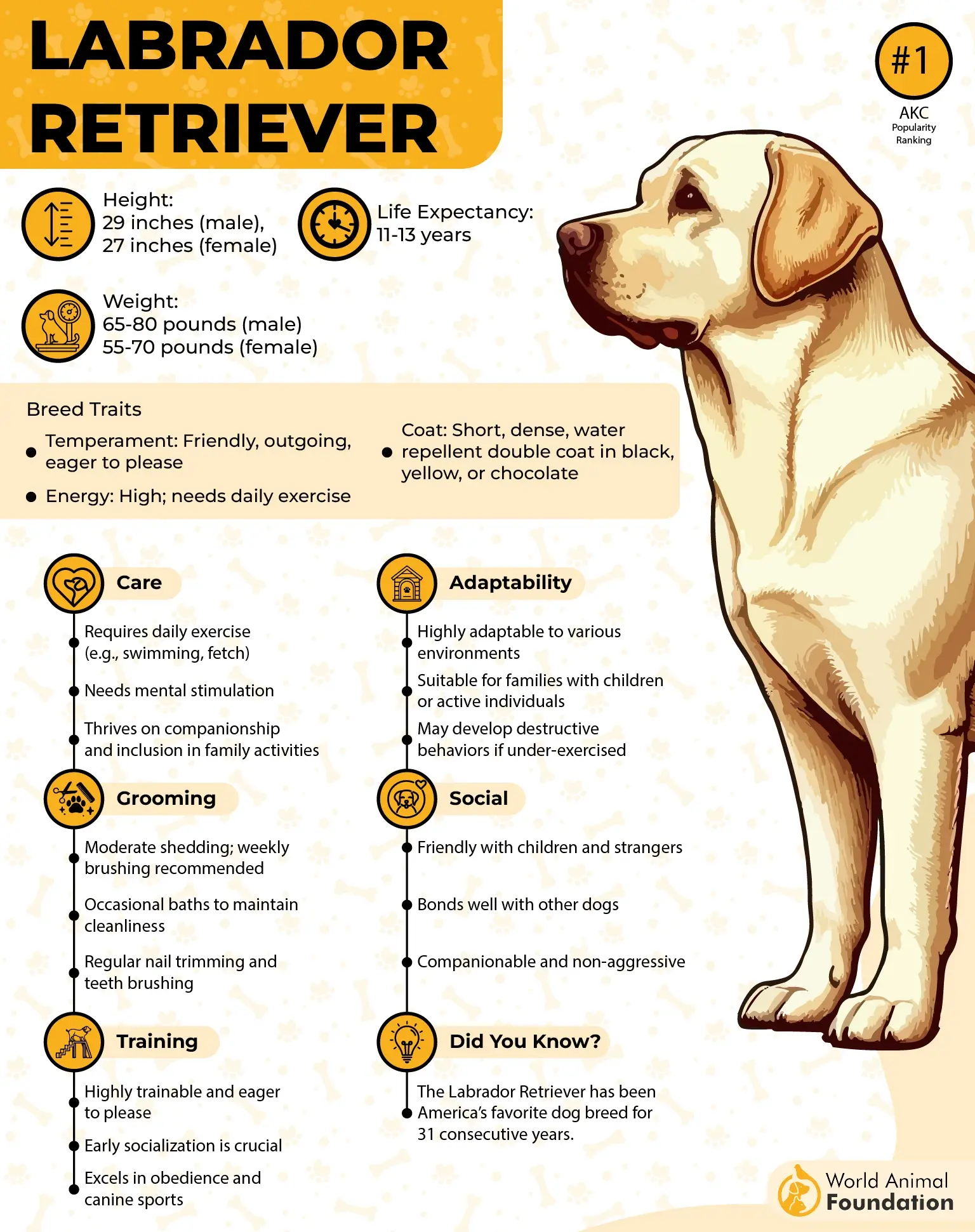
Labradors thrive in active households where they are given tasks, whether it’s retrieving toys, swimming in lakes, or happily trotting across the yard to bring in the newspaper.
The breed’s temperament is consistently dependable, which is one reason Labradors are trusted as guide dogs, therapy dogs, and search-and-rescue partners. They are outgoing with strangers, patient with children, and eager to engage with their family’s routines.
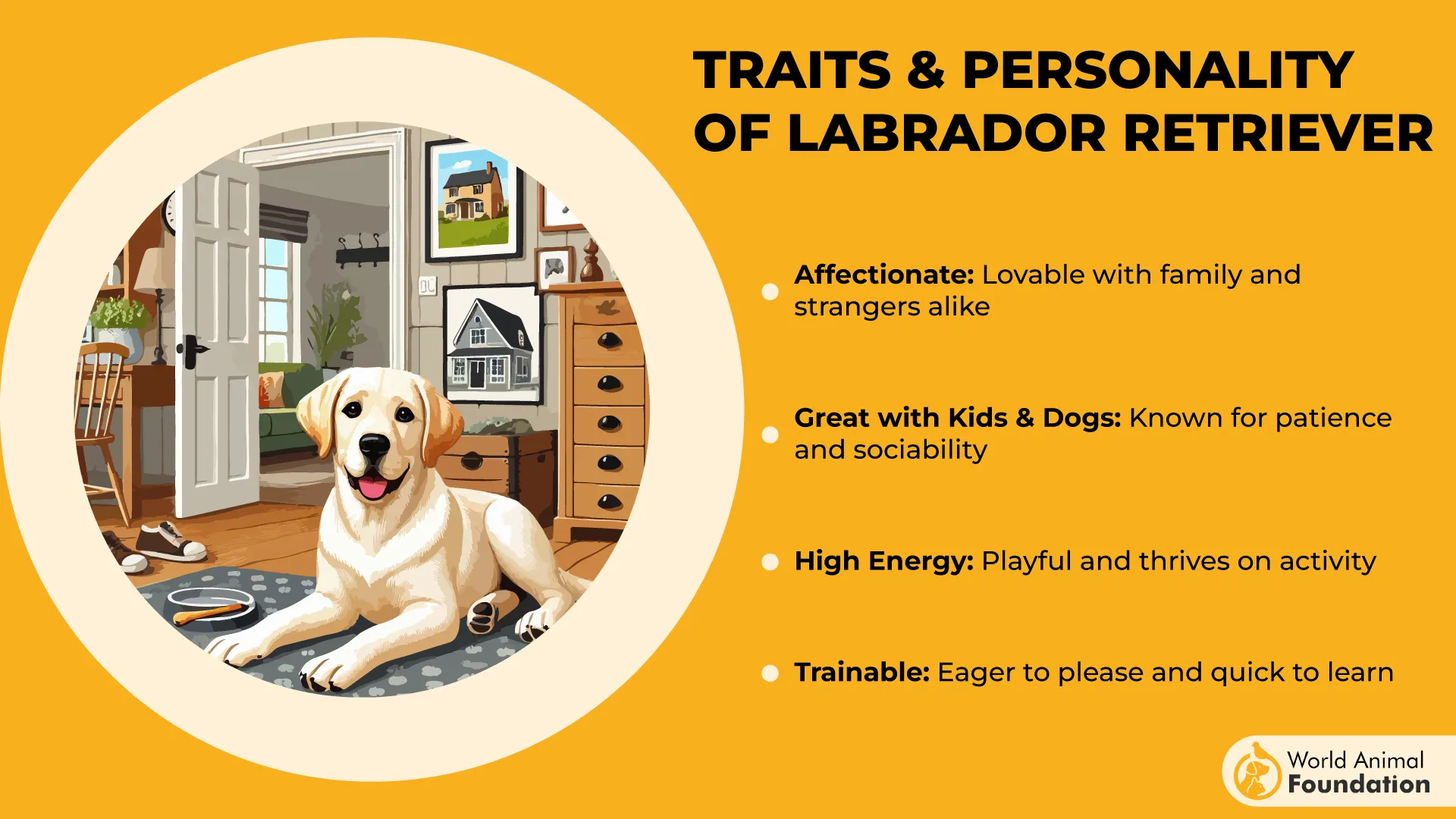
Their energy levels are high, and they do best when they have two hours or more of exercise each day, from long walks to interactive games. Labradors have an affectionate nature paired with strong working ability, a combination that continues to make them one of the most admired and capable breeds worldwide.
Fun Fact
Every Labrador Retriever shown in British dog shows must hold a working certificate, proving it can perform the retrieving tasks it was originally bred for.
2. Golden Retriever
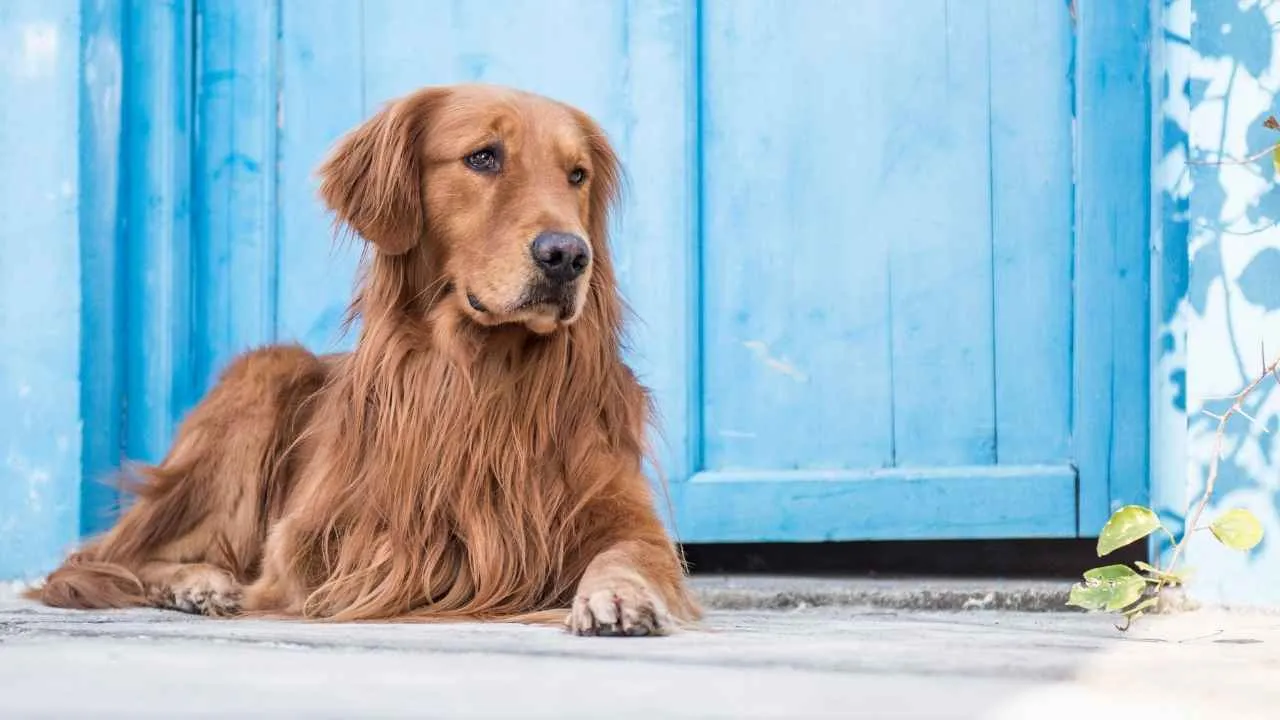
The Golden Retriever is a breed celebrated for its warmth and steady disposition, shaped by generations of purposeful breeding for game retrieval. It was first developed in Scotland in the 19th century by crossing yellow retrievers with water spaniels, producing a dog with the intelligence and stamina to work in the field.
Goldens are marked by their friendly temperament and keen desire to participate in family life, often taking on small “duties” around the home. Their instinct to carry and return objects is strong, and many will pick up anything within reach—tennis balls, shoes, and even the daily paper—simply because it feels natural.

Their lush double coat is one of their most distinctive features, shedding year-round and heavily during seasonal changes. Brushing several times a week keeps the coat manageable and healthy.
Outdoor activities like swimming help maintain muscle tone and satisfy their energetic drive. Goldens are adaptable and affectionate, blending easily into homes with children, other dogs, and even cats.
They have a well-earned reputation for being calm and trustworthy, yet behind their gentle demeanor is a working dog that loves to retrieve, run, and be a part of any shared routine.
Fun Fact
Golden Retrievers were named for their ability to “retrieve” downed game, and their iconic golden coat was deliberately cultivated to stand out in the field.
3. Poodle
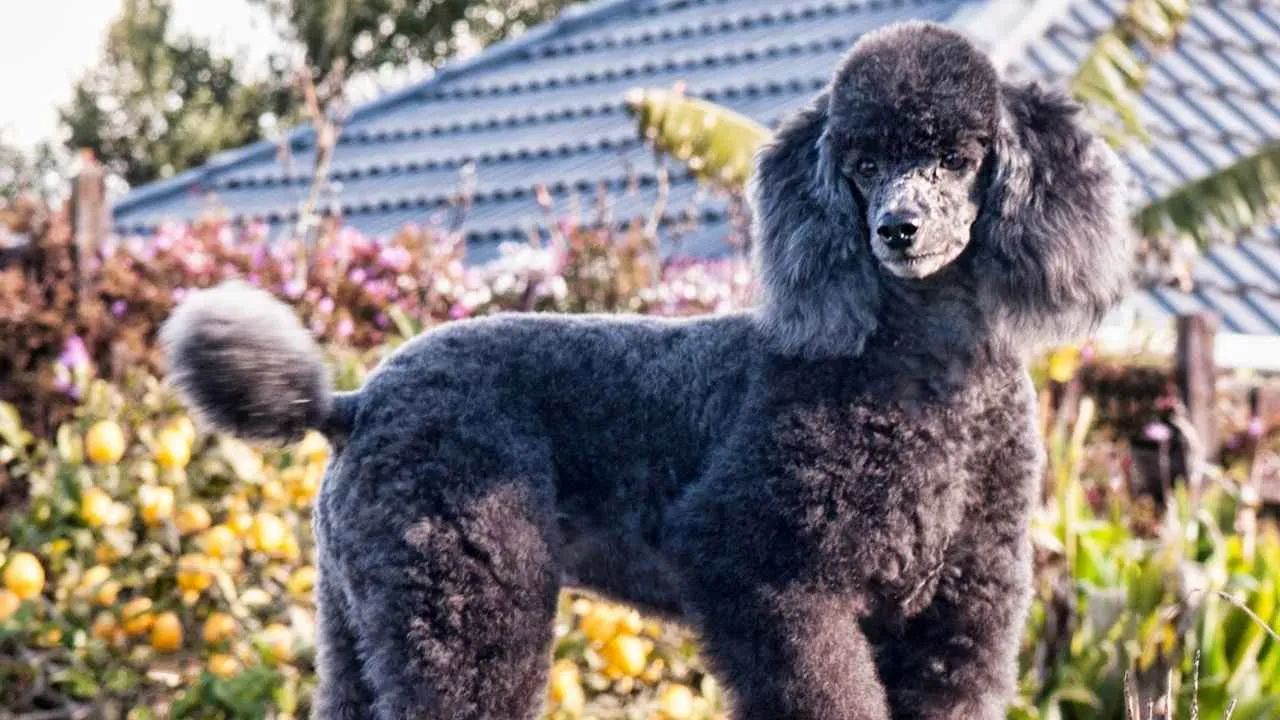
The Poodle has an image of sophistication, but its history is rooted in practical work as one of Europe’s original water retrievers. Developed in Germany and refined in France, Poodles were bred to leap into ponds and marshes to collect ducks and other game.
Their tightly curled coat served a protective function, shielding them from cold water and injury, and their intelligence made them highly responsive to commands. Even now, Poodles of all sizes retain a drive to carry and deliver objects, often delighting in picking up items around the house as part of their natural behavior.
There are three sizes—Standard, Miniature, and Toy—each sharing the same sharp wit and lively temperament. Their quick minds require enrichment, and they thrive when given puzzles, obedience exercises, and interactive play.
Daily walks and activity are essential, particularly for Standards, who are athletic and strong. Their coat, while low-shedding, demands consistent care with brushing and regular grooming to prevent matting.
Poodles are known for forming strong bonds with their people, and they respond immediately to tone and attention, making them one of the most trainable and responsive breeds.
Fun Fact
The traditional Poodle “clip” was originally designed by hunters to help the dogs swim more easily while protecting vital joints and organs from cold water.
4. Border Collie

The Border Collie is a herding dog known for unmatched energy, intelligence, and working ability. Bred on the border of England and Scotland, these dogs spent centuries guiding flocks across rugged hillsides with precision and instinct. They remain renowned for their athletic grace and intense “eye,” the focused stare that controls sheep and cattle with no wasted movement.
Every day, Border Collies require demanding exercise and mental challenges. They excel in agility, flyball, obedience, and even canine sports like disc competitions. A long run or a few hours of structured activity barely takes the edge off their energy.
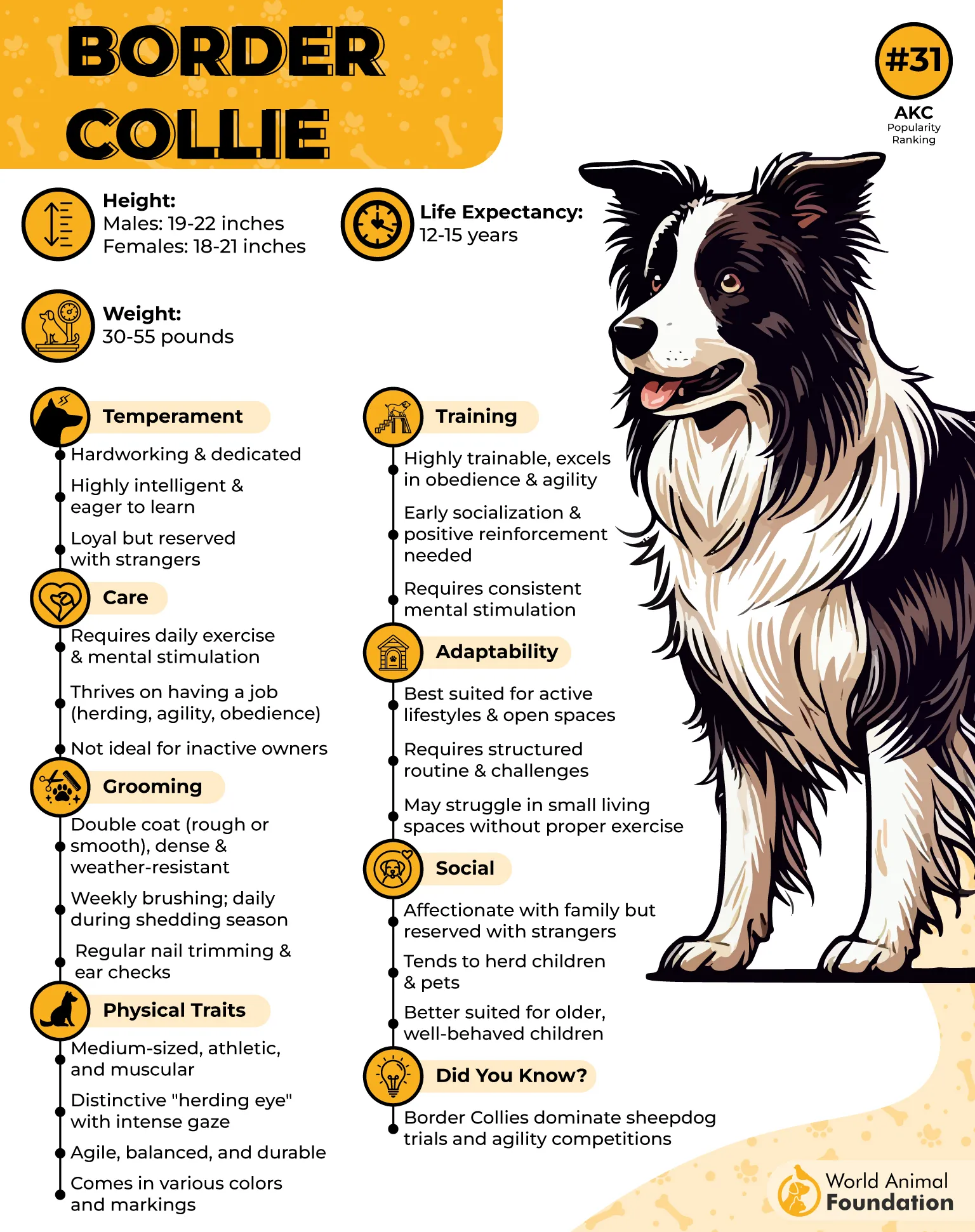
Their temperament is alert and sensitive, often deeply attuned to the smallest signals from their owners. They bond tightly with handlers and notice changes in routine instantly. That level of awareness makes them remarkable working partners.
Grooming needs are moderate—weekly brushing keeps their coats tidy and prevents tangles. Their double coat also helps them withstand rough weather during long days outdoors.
Border Collies usually live 12–15 years and are generally healthy, though prone to hip dysplasia, epilepsy, and eye disorders. Responsible breeding and genetic testing help keep these dogs strong for a lifetime of work and companionship.
Fun Fact
Border Collies consistently rank as the most intelligent dog breed, mastering new commands with remarkable speed.
5. Australian Shepherd
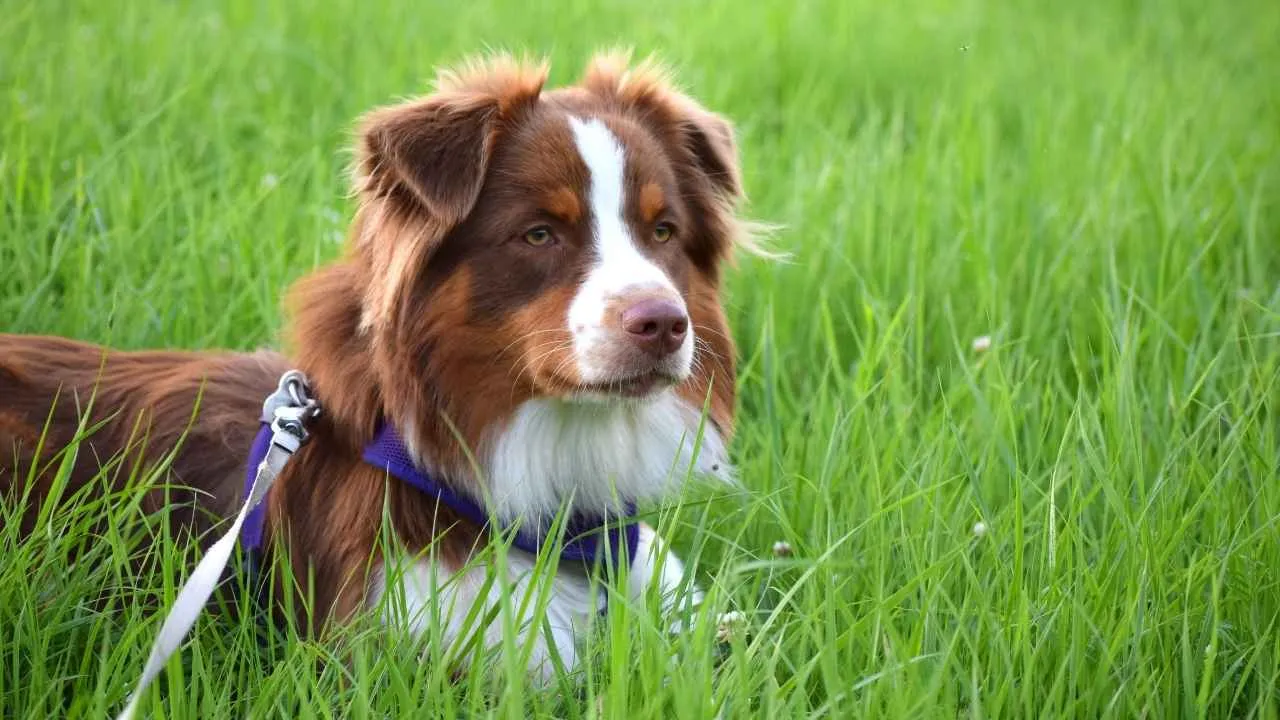
Australian Shepherds were shaped on American ranches, bred to herd sheep and cattle across rough country with stamina and skill. Despite their name, they developed in the western United States, where their drive and versatility became essential to ranchers. That working heritage fuels a powerful instinct to move, direct, and manage.
The coat is medium-length with a soft underlayer, shedding steadily through the year and heavily in seasonal bursts. Brushing a few times a week controls shedding and keeps the coat free of tangles, while a quick check of ears and tail prevents debris from accumulating.

As per PetMD, these dogs thrive when there’s work to do. Whether it’s competing in agility, practicing tricks, or helping on a farm, they seem happiest with purpose. Without daily activity, they can become restless and invent their own jobs, like rounding up children or pacing the yard.
Their temperament is loyal and affectionate, though often reserved with strangers. Early socialization helps them channel their instincts, and their devotion makes them closely tuned to their people’s moods and movements.
Australian Shepherds are generally healthy, living 12–15 years, but can inherit issues like epilepsy or eye conditions. Careful breeding and regular vet checks support a long, active life.
Fun Fact
Many Aussies have striking, naturally occurring blue or mismatched eyes, a trait prized by ranchers who believed it gave the dogs a “watchful” look.
6. English Springer Spaniel
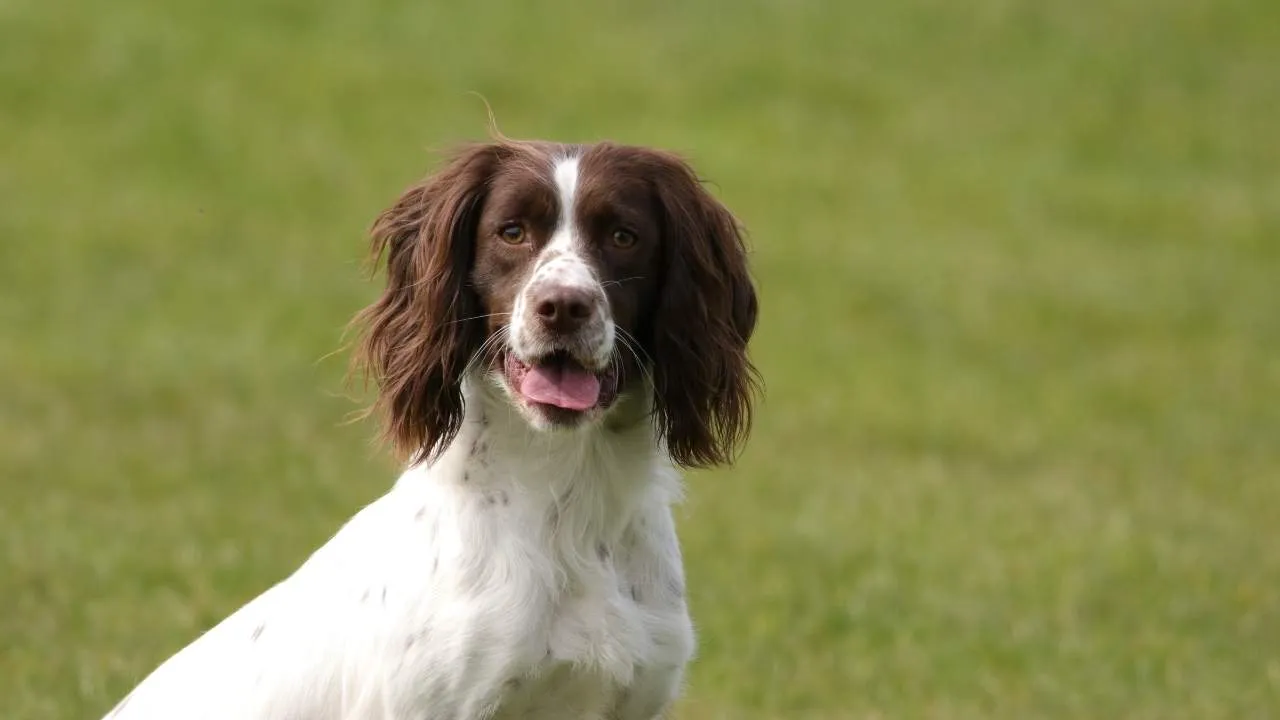
The English Springer Spaniel is a classic gundog, bred to flush game birds from dense cover and retrieve them for hunters. Its feathered ears and soft expression hint at centuries of field work, where energy and willingness were essential qualities.
They have an affectionate and outgoing personality that makes them natural family companions. Springers often follow their people from room to room, eager to be part of whatever is happening. Their enthusiasm for attention means they respond instantly to praise and gentle guidance.
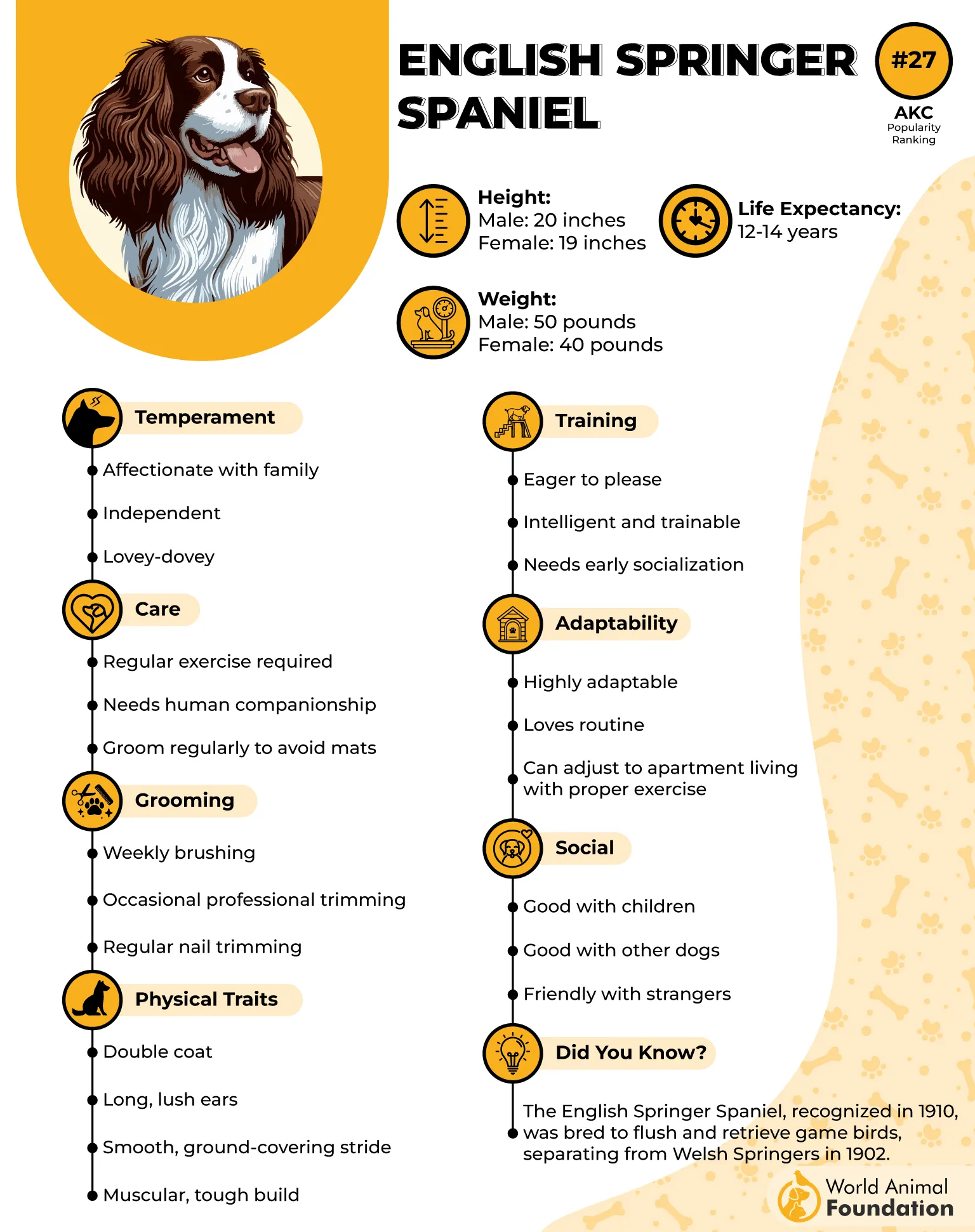
Daily activity keeps this breed balanced. Long walks, games of fetch, or even supervised swimming sessions all suit their athletic nature. They adapt easily from country fields to suburban yards, provided they have enough to do.
Coat care is part of living with a Springer. WebMD states that their feathered fur on legs and chest benefits from brushing a few times a week to prevent mats, and ears should be cleaned regularly to avoid infections.
They tend to live 12–14 years, though, like many sporting breeds, they can develop hip dysplasia and eye problems. With good care and thoughtful breeding, Springers remain vigorous and affectionate companions well into their senior years.
Fun Fact
The term “springer” refers to their original job: “springing” birds from the brush to take flight for hunters waiting nearby.
7. Belgian Malinois
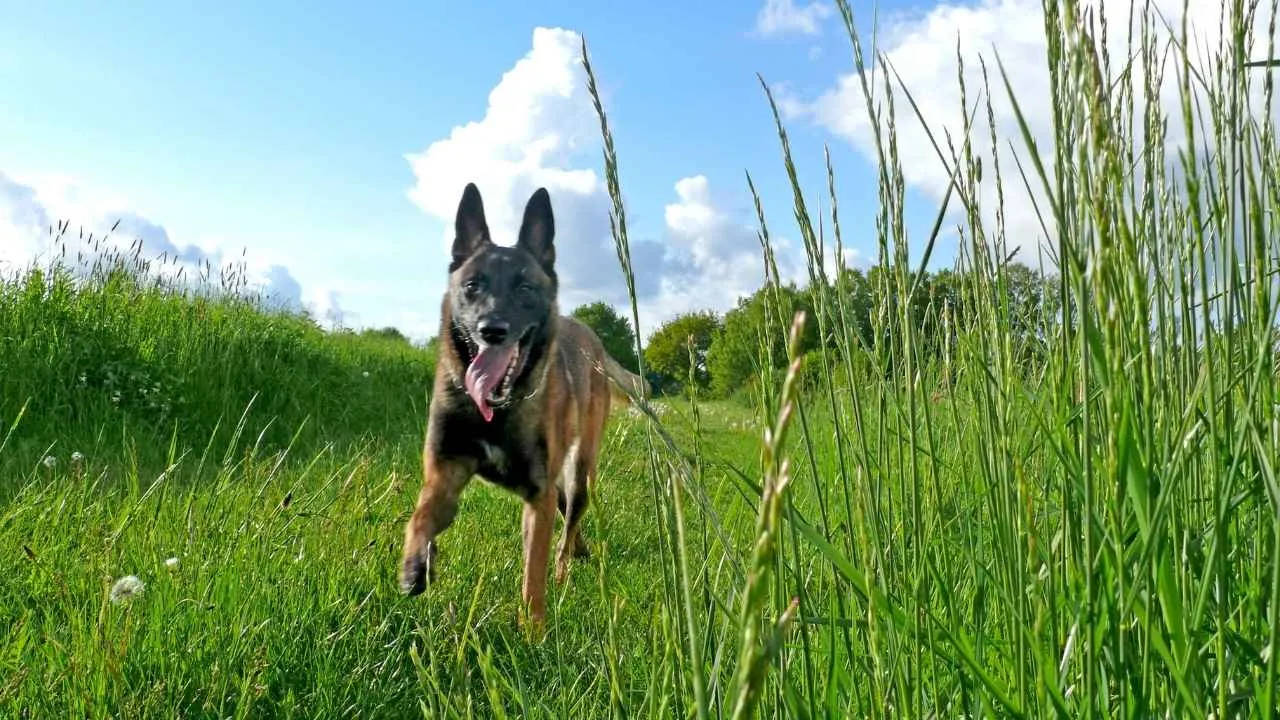
The Belgian Malinois is a herding dog turned elite working partner, valued today for its role in military, police, and security work worldwide. Lean, agile, and endlessly alert, they were originally bred to manage flocks in Belgium, a task requiring precision and endurance.
Malinois are intensely bonded to their handlers and respond instantly to direction. Their protective instincts are strong, and they thrive when given structure, training, and daily interaction. In the right hands, they become focused companions who anticipate commands before they’re spoken.
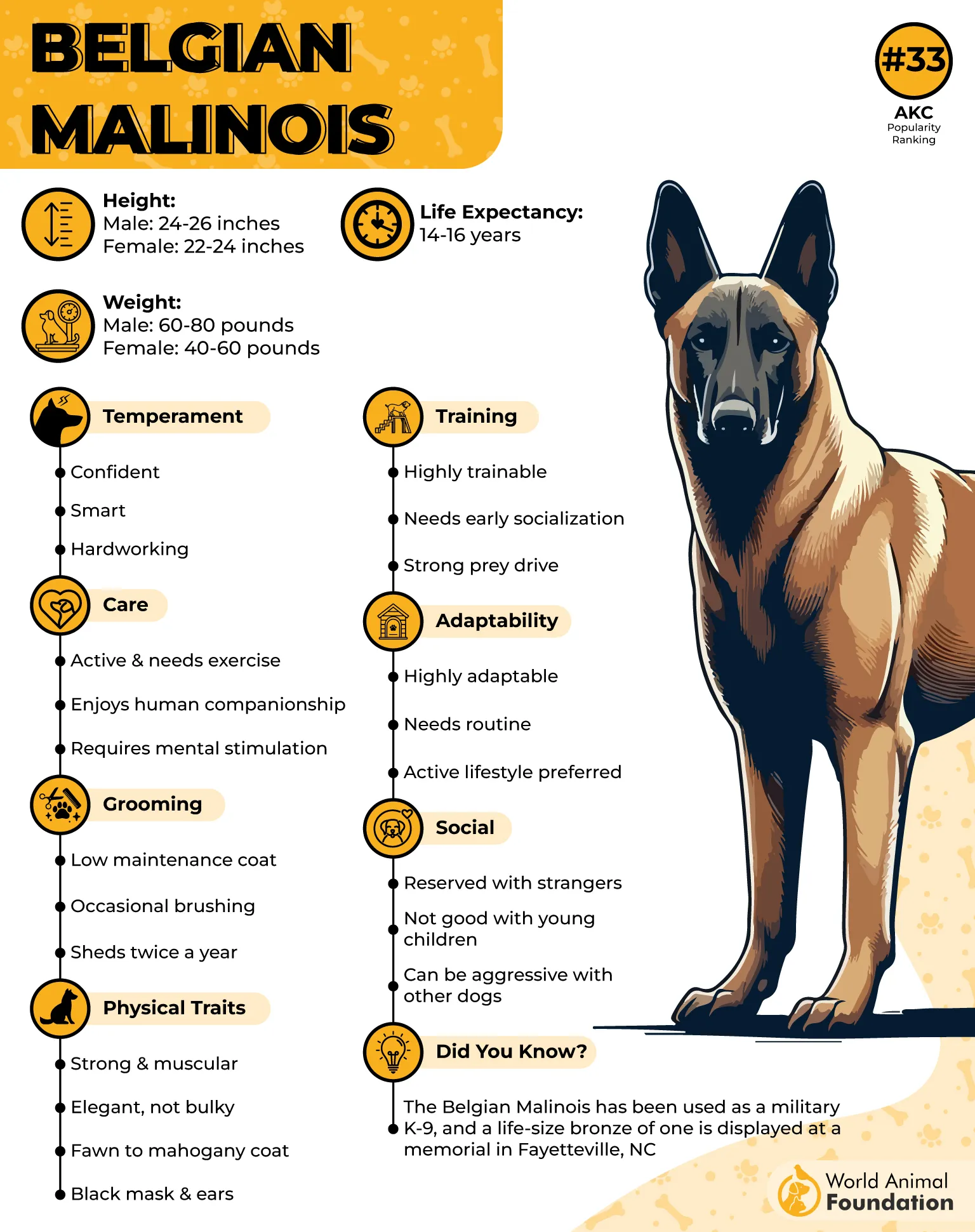
Physical and mental exercise are essential. Long runs, advanced obedience drills, scent work, and tracking games are all ideal for keeping their busy minds and bodies satisfied. Without challenges, their drive can turn into frustration or hyperactivity.
The breed’s short, dense coat is easy to maintain—weekly brushing handles most shedding and keeps them looking sharp. Minimal grooming needs leave more time for work and play.
Generally healthy and long-lived (often 14–16 years), they may face hip or elbow dysplasia and occasional vision problems. Careful breeding and regular health checks keep them strong enough for the intense demands placed on them.
Fun Fact
The Malinois has surpassed the German Shepherd in many special-operations units, prized for its agility and faster reaction speed during high-pressure missions.
Conclusion
Living with one of these hardworking breeds means sharing your days with a dog that thrives on purpose and routine. From the moment a pup steps through the door, every small act—whether it’s learning to sit, walking on a leash, or waiting on the sidewalk—helps create a strong connection. Owners can teach good behavior by making lessons simple and enjoyable, offering treats, a kind word, and a sense of joy with each rewarding moment.
Puppies need quite a bit of guidance, and early mental stimulation goes a long way. You can introduce a fun trick, encourage calm eating habits, or offer puzzle toys on the floor to keep them interested. Even trips to pet stores can provide new scents and sights, turning routine errands into learning opportunities.
The key is to repeat what works, verify that your pup is truly excited, and review your approach when needed. With a bit of patience, these small acts solve big challenges—fewer problems, smoother walks, and a dog who looks for every sign that you’re ready to march forward together.


